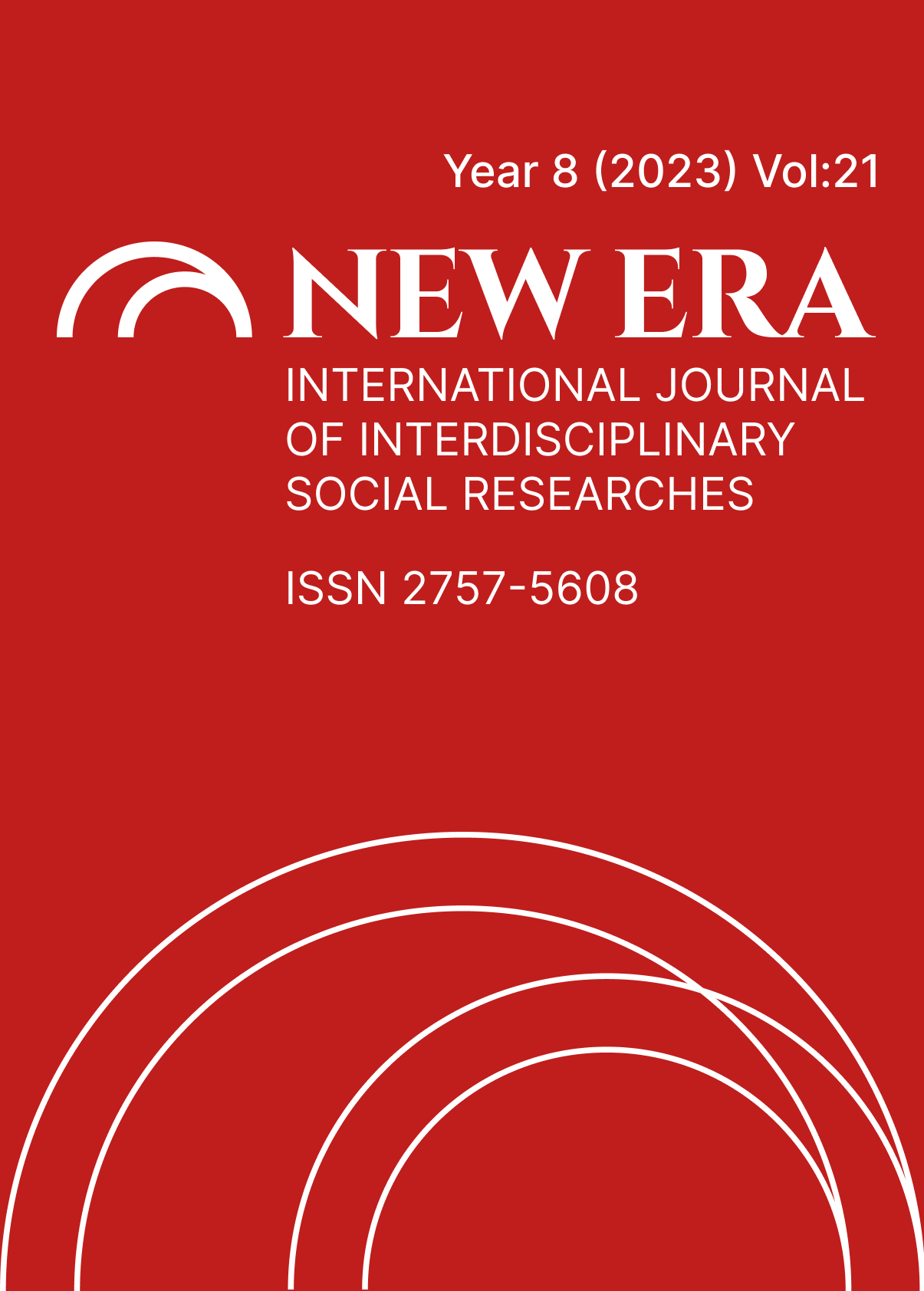REGRESSION OF THE SACRED IN THE TRAUMA OF MODERNISM: CONNOTATIONS OF HORROR IN H.P. LOVECRAFT’S THE SHADOW OVER INNSMOUTH
DOI:
https://doi.org/10.5281/zenodo.10421279Abstract
H.P. Lovecraft, who has an important place in literature with his works in the horror, fantasy, and science fiction genres, has been examined in many studies within the framework of different theories and topics through his novella The Shadow Over Innsmouth. Written in a transition period from modernism to the postmodern world, the story contains elements that reflect the traumas of both the modernist era and the cultural history of humanity, beyond the element of horror as a form of tension or gothic variation. Elements ingrained in the social memory, from the most archaic traditions of settled life to its gods, have changed and evolved into new cultural dynamics with the transition from mythos to logos. On the other hand, this situation has made a re-entry into cultural history after the suppression of myths, legends, superstitions, and the irrationality beneath modernism, rationality, and the othering of the irrational. In fact, the individual who has become more individualized in the light of modernity within a patriarchal and masculine culture, turns back to the anchoring points that have allowed survival in the most ancient times when faced with a serious trauma. In his work, Lovecraft narrates the return of modern man to his inherent origins through divine images in a horror town. The aim of this study is to explain the phenomenon of returning to roots through the metaphors and images in the work The Shadow Over Innsmouth.
References
Berger, Peter L. The Sacred Canopy: Elements of a Sociological Theory of Religion. New York: Anchor, 1967.
Campbell, Joseph. Batı Mitolojisi, Kudret Emiroğlu (çev.). Ankara: İmge Yayınları, 1995.
Donald, Roy H. Plato’s Mythoi: The Political Souls’s Drama Beyond. Lanham: Lexington Books. 2018.
Eliade Mircea. Mitlerin Özellikleri, Sema Rifat (çev.). İstanbul: Om Yayınevi, 2001.
Freud, Sigmund. The ego and the id. In J. Strachey (Ed. & Trans.), The Standard Edition of the Complete works of Sigmund Freud: Vol. 19. (pp. 12–66). London: The Hogarth Press. 1923.
Jenner, M. S. R. (2011). Follow Your Nose? Smell, Smelling, and Their Histories. The American Historical Review, 116(2), 335–351.
Lovecraft, Howard Philips. Selected Letters. Edited by August Derleth and Donald Wandrei (vols. 1-3) and August Derleth and James Turner (vols. 4-5). 5 vols. Sauk City, Wise: Arkham House 1965-76
Lovecraft, Howard Philips. The Shadow of Innsmouth, Dost Körpe (çev.). İstanbul: İthaki Yayınları, 2021
Peters, Francis. Greek Philosophical Terms. A Historical Lexicon. New York: New York University Press, 1967.
Rhodes, Richard. Aural Images. in J. Ohala, L. Hinton & J. Nichols (eds.) Sound Symbolism. Cambridge, UK: Cambridge University Press. 1994.
Rowe, Bill. “Retrospective: Julian Jaynes and The Origin of Consciousness in the Breakdown of the Bicameral Mind.” The American Journal of Psychology, vol. 125, no. 2, 2012, pp. 237–49.
Sarafoleanu C, Mella C, Georgescu M, Perederco C. The importance of the olfactory sense in the human behavior and evolution. J Med Life. 2009 Apr-Jun;2(2):196-8.
Schopenhauer, Arthur. The World As Will and Representation VOLUME I, (Trans.d by E.F.J. Payne), Dover Publications, New York, 1969.
Stamatellos, Giannis. (2015). Virtue and Hexis in Plotinus. The International Journal of the Platonic Tradition. 9. 129-145.
Downloads
Published
How to Cite
Issue
Section
License
Copyright (c) 2023 NEW ERA INTERNATIONAL JOURNAL OF INTERDISCIPLINARY SOCIAL RESEARCHES

This work is licensed under a Creative Commons Attribution-NonCommercial 4.0 International License.


